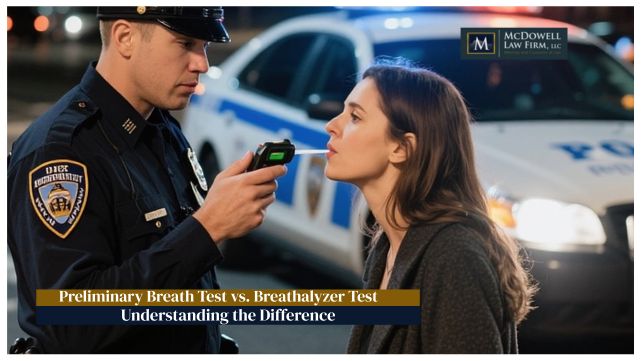Impaired driving is a growing epidemic in the US. Drunk driving and impaired driving are a major problem on the roads. But driving high and driving drunk have a few important differences. Whether it’s stats or economic and social burdens, there are some important difference between the two.
In this post I’ll break down how drunk driving differs from high driving by looking at physiological effects, national and international stats, BAC limits, challenges for common drugs and more. Before you get behind the wheel, check out our drunk driving vs high driving stats.
Alcohol Vs. Drug Impairment
When combined, alcohol and narcotics can severely impact a person’s judgment, coordination and reaction time. These drugs change how the brain works, which impairs cognitive function and increases risk-taking behavior. However, the impairments have different effects.
Physiological Effects Of Alcohol On The Driver
Alcohol reduces a driver’s ability to think fast, make good judgments and control the vehicle. It impairs coordination, slows down reaction times and causes eyesight impairment even in small doses. These impairments increase the likelihood of accidents from delayed reactions to traffic signals, obstacles or other road hazards. Alcohol also impairs judgment and causes reckless behavior and lack of focus which puts other drivers and themselves at risk when driving.
Physiological Effects Of The Most Commonly Used Drugs Other Than Alcohol On A Driver
It’s obviously not safe to drive under the influence of drugs. Many drugs and alcohol can severely impair your ability to drive and increase the risk of accidents.
Cannabis impairs coordination, slows down reaction times and warps perception. This makes it harder to stay in your lane or drive at a steady pace.
Opioids impairs thinking, makes you drowsy and causes delayed reactions. And impairs judgment which makes driving very dangerous.
Cocaine and methamphetamine are examples of stimulants that may make you feel awake but can also cause erratic behavior, violence and poor judgment.
Sedatives cause dizziness, tiredness and slow reaction times. And impairs focus and fast information processing.
Because of their profound effects on perception, hallucinogens make it difficult to distinguish time and see distance or surroundings. This can make a high driver extremely disoriented.
Differences In Impairment
Both alcohol and drugs can cause impaired driving but the symptoms and causes of impairment differ depending on the substance.
| Impairment | Alcohol | Other Illicit Drugs (Marijuana, Opioids, Stimulants, Sedatives, Hallucinogens) |
| Reaction Time | Reduces significantly. | It varies. May be erratic in the case of stimulants but slowed in cannabis and opioids. |
| Motor And Coordination Skills | Difficulty in operating the vehicle controls. | You can be impaired to several degrees. Hallucinogens and sedatives affect motor skills severely. |
| Vision And Perception | Difficulty judging distances due to blurred vision. | It alters the perception of reality with hallucinogens. With marijuana, depth perception issues happen. |
| Judgment And Decision Making | Increased risk-taking, and poor decision-making. | Overconfidence with stimulants. Impaired judgment with hallucinogens and marijuana. |
| Concentration And Attention | Lowers the ability to maintain attention and concentrate. | It varies. Reduces with sedatives and marijuana and falsely heightens with stimulants. |
National And International Statistics On Drunk Driving Incidents
Drunk driving involves national and international statistics. The figures vary depending on the social norms, region and enforcement. Check out the facts below to see the statistics on impaired driving: alcohol vs marijuana!
National
In Colorado, drunk driving is still a major public safety issue due to the devastating effects of driving drunk as seen by the numbers.
In 2023, 716 people died in crashes, 218 of which were drunk drivers. That’s a 23.8% drop from 2022 when 286 people died in crashes caused by drunk driving.
Nationally, alcohol impaired driving crashes killed 13,524 people. Over 280 of which were children in 2022 alone.
International
According to the World Health Organization, drunk driving is a major global health issue (WHO). Norway and Japan are two countries with stricter laws against drunk driving. Consequently, they have much lower rates of drunk driving than those with lenient laws or enforcement.
National And International Statistics On Driving Under The Influence Of Commonly Used Prescribed Or Illicit Drugs
Driving under the influence of drugs whether from prescription or illicit sources is dangerous to everyone. National and international statistics on impaired driving: alcohol vs marijuana is scary:
National
Drug related crashes killed 9,818 people in the US in 2020. Up 1.6% from 9,661 in 2019 and 7.4% from 9,140 in 2016. Authorities test a significant number of drivers positive for both illegal and legal drugs. Including marijuana which has increased since it was legalized in several states.
International
Drug impaired driving is a global issue. In Canada for example, the number of occurrences increased after cannabis was legalized. Drug impaired driving rates vary across European countries, some of which report higher rates of cannabis and cocaine use among drivers.
Comparative Analysis Of The Prevalence Rates
Drunk driving is a major threat to road safety when people drive under the influence of drugs or alcohol. The drunk driving vs high driving statistics proves it.
We compared the prevalence rates of drunk driving and high driving, looking at the impact of laws and social norms on these behaviors.
Drunk And High Driving Comparison
Unlike drug driving, drunk driving is more prevalent worldwide. It’s because the problem has been socially acknowledged for a longer time and more effective detection methods have been used.
But high driving is also becoming more common, especially as the laws and views on substances like marijuana and magic mushrooms change in Colorado. Remember, they may be legal for you to use these substances, but is not legal to drive while you are impaired by them.
Impact Of Legislation And Social Norms
Colorado’s stance on drunk driving and the state’s legalization of marijuana for recreational use has created a confusing driving environment. The state is tough on drunk driving and has strict laws against alcohol-impaired driving.
Since the state legalized marijuana, there’s less stigma around cannabis use. It’s also led to more drug-impaired driving occurrences. There is a legal limit for Marijuana driving in Colorado. It is 5 ng of active THC in your system. This can be determined through a blood test during an express consent test resulting from a DUI stop. Colorado does not have a set (presumptive) legal limit for other substances beyond alcohol and weed. The issue becomes whether a substance-impaired or substantially affected your ability to drive as a sober person would.
The difference in the legal and social context of marijuana and alcohol use may affect the percentage of impaired vs high drivers on Colorado’s roads.
Data Collection and Comparison Challenges
Drug-impaired driving is increasing in Colorado. Blood alcohol concentration (BAC) is a simple way to measure alcohol impairment. It’s a clear indicator for the legal and law enforcement system.
On the other hand, multiple substances are involved in drug-impaired cases. And no standardized limits for drug levels have been set for prescription or illegal drugs. (other than marijuana).
Blood Alcohol Concentration (BAC) Limits For Alcohol-Impaired Driving
Driving under the influence of alcohol in Colorado can end up costing you a lot of money. These include court fines, legal fees, probation supervision fees, ignition interlock device (IID) rental and other expenses that can often exceed $10,000. Obtaining a complete dismissal of DUI charges is not easy, it requires expertise in handling the case, and typically some really good facts.
Drunk driving and high driving cases can both be penalized in Colorado.
Jail time, probation (or a deferred sentence), alcohol classes, MADD VIP panel, and community service hours are mandatory consequences of the charge of DUI, DUID or DWAI.
| Limits And Implied Consent | Percentage |
| BAC Limit-“DUI per Se” | 0.08% |
| BAC Limit-presumptive DWAI | 0.05% |
| Mandatory Jail | 0.20% |
Challenges In Establishing And Enforcing Comparable Limits For Commonly Used Drugs
Setting and enforcing comparable limits for commonly used drugs in Colorado is complicated.
Variability Of Drugs
Unlike alcohol, the effects of drugs like marijuana, opioids and stimulants vary greatly depending on many factors. It includes the substance itself, dose, individual user and location. This makes it very hard to set a uniform impairment threshold for Colorado drivers.
Everyone reacts differently to medicines and the same dose of medicine can have different effects on different people. Plus, tolerance, body weight and overall health can affect how medicine affects a person.
Detection And Measurement
Unlike BAC, there is no standard criteria for drug impairment. Drug testing can detect the presence of narcotics but not the impairment. For example, you can detect opioids and benzodiazepines but determining the impairment is difficult. Law enforcement will often rely on driving behaviors, physical observations of the driver and field sobriety tests.
Legal Complexity
Colorado drug laws are different from other states. Some states have strict “zero-tolerance” policy for any detectable amount of illegal drugs when charging for a DUI or equivalent . As I have discussed, Colorado has established a legal limit for marijuana at 5 ng of active THC.
Laws vary greatly by States, some regions have zero-tolerance rules for any measurable amount of illegal substances while others try to set limits.
The difference in legal responses reflects the difficulty in linking drug use to impairment. To avoid trying to resolve your set of circumstances alone, hiring a DUI lawyer is worth it if you are charged with an impaired driving case.
Statistics On Traffic Accidents Involving Alcohol Impairment
In Colorado, alcohol-influenced driving is a leading cause of fatal crashes. In 2023, there were 218 deaths in Colorado due to drunk driving according to NHTSA. The age group with the most arrests was 25-34 with 5,431 total.
Alcohol impaired driving has a devastating effect on Colorado’s roads. These incidents are classified based on severity resulting to a high number of injuries and fatalities.
Intoxication impairs judgment and motor skills making it a deadly combination behind the wheel.
Drivers under the influence often engage in dangerous behaviors such as speeding, weaving, tailgating and incorrect lane changes. It increases the chances of severe crashes.
Statistics On Traffic Accidents Involving Other Drug-Related Impairment
A person’s BAC provides a clear and measurable measure of alcohol impairment. But there is no standard criteria for drug impairment. Yes, drug tests can detect the presence of many substances in a person’s system. But they can’t reliably determine how much those drugs have impaired a person’s cognitive abilities, motor skills or overall judgment. One defense I have successfully used with prescription drug DUIs is to show that the amount of drugs in their system is consistent with the therapeutic dose, and that they have not been counseled to not drive while taking their medication.
The lack of a standard makes it much harder to prove drug impairment in legal proceedings. Proving drug-impaired driving in Colorado without a valid impairment threshold is tough for the prosecution in many cases.
Polydrug use or using multiple drugs at the same time makes drug-related incidents in Colorado more complicated. This can increase impairment levels.
Understanding the complex interplay of different drugs and their effect on driving ability is key to correctly determining drug involvement in traffic accidents.
The Cost Of Drunk Driving On Healthcare And Law Enforcement
Now that you know the drunk driving vs high driving statistics, the impact is serious and widespread. Drunk driving is a societal problem that puts a heavy economic burden on healthcare and law enforcement. Many of these costs are borne by the public:
- Healthcare Costs: Drunk driving incidents result to serious injuries, deaths and big medical bills. These costs include medical treatment, rehabilitation, emergency services and long term care.
- Law Enforcement and Legal System Costs: The costs of enforcing drunk driving laws include DUI checkpoints, police patrols, legal hearings, arrests and incarceration. These costs are big for local and national government.
- Insurance And Property Damage: Alcohol impaired driving increases insurance premiums and damages to infrastructure and vehicles.
The Cost Of High Driving On Healthcare And Law Enforcement
Drunk driving vs high driving risk assessment is important. The cost of driving under the influence (DUI) is becoming more visible as marijuana and other drugs are being legalized.
Drug impairment accidents like alcohol-related crashes can result in big healthcare expenses. The extent and type of injuries can be vast and affect individuals and the healthcare system.
Enforcing rules against drug-impaired driving has its own set of challenges. Detecting drug impairment requires specialized training, equipment, and expertise like Drug Recognition Experts (DREs) and advanced drug testing kits. This adds to the cost of enforcement compared to alcohol-related DUI cases.
If you have been charged with DUI, DUID (drugs), DWAI, or other alcohol-related driving incident, don’t face these charges alone. McDowell Law Firm has got your back. Our experienced Colorado Springs DUI law firm knows the intricacies of DUI and DWAI cases.
We will build a defense custom fit for you to obtain the best result we can in your situation.
Our experienced DUI lawyer knows the severity of these charges and the impact. We will protect your rights and minimize the damage. Contact us now and let us walk you through the process.






